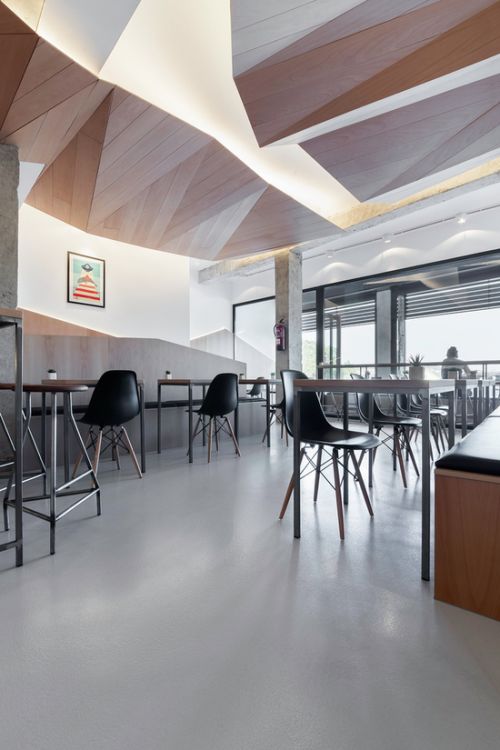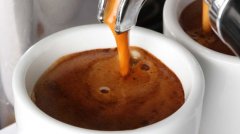Why is Starbucks the most successful in the coffee industry?

Starbucks, headquartered in Seattle, Washington, USA, has been developing for nearly 40 years. Without advertising, Starbucks has expanded into the largest coffee shop chain in the world, which has become a miracle in the industry. On a rainy weekend afternoon, the reporter visited the first Starbucks store at 1912 Park Market Street in Seattle.
Starbucks No.1, like the Pike Fish Market across the street, has long been one of Seattle's business cards. There are a lot of people outside the shop, and it's very crowded inside. The long line is just for a taste of coffee here. Two days later, at 9: 00 p.m., the reporter came here again. It's not all dark, and the shop is still open, but there is less noise, so we can take a closer look at the number one Starbucks store in the world.
The shop is rectangular and covers an area of about 60 square meters. There are no tables and chairs for customers to sit down for coffee, let alone the fashionable furnishings of other stores. But signs of "first" can be seen everywhere in the shop: "Starbucks first Store, founded in 1971" is marked on the pillar copper round icon; three original trademarks of the earliest version of Starbucks are hung side by side above the shop window. The shape of the brown double-tailed mermaid is very different from the usual Starbucks green logo. There are two maps of the world on the wall near the counter, one of which has a card in the bottom frame indicating that as of October 4, 2009, Starbucks had 16082 stores around the world.
Reporters who usually don't drink coffee also asked for a cup at this time, accompanied by wisps of fragrance, savoring the legendary start-up story of Starbucks from here. More than 40 years ago, a businessman named Alfred Pitt was doing brisk business in Seattle selling coffee beans and related equipment. Inspired by this, Baldwin, an English teacher who knew Peter, Siegel, a history teacher, and Buck, a writer, teamed up to open the first coffee bean store in Seattle on March 30, 1971. At first, the store was located at 2000 West Street, and then moved to its current location. After several discussions, the name of the shop was inspired by several partners from American novelist Melville's masterpiece Moby Dick, and they finally agreed to name the name of Star, the coffee-loving first mate on the whaling ship Piguard in the novel.
Howard Schultz joined Starbucks in 1982 as director of retail and marketing and was the first to suggest that Starbucks should sell not only coffee beans but also steam-pressurized drip-filtered coffee. Several entrepreneurial partners initially rejected the idea. For them, coffee should be brewed in their own homes, and entering the beverage market goes against the original intention of starting a business. Schultz, who stuck to his ideas, opened a new coffee shop in April 1986 and bought Starbucks the following year. Since then, Starbucks has increased its business content and expanded rapidly, leaving Seattle to open a branch in Vancouver, Canada. In 1996, Starbucks opened its first store outside North America in Tokyo, Japan. So far, Starbucks has more than 17000 stores in about 50 countries and regions around the world.
In the first Starbucks store, the waiter talked enthusiastically with the reporter. Starbucks' corporate culture is to encourage waiters to communicate with customers. In fact, one of the secrets of Starbucks' success is to make it a "third communication space" different from home and office through a series of changes and innovations. According to Schultz, what Starbucks sells is actually an "experience". In this experience of coffee culture, coffee itself is not even important.
During the conversation, the reporter learned that Starbucks had also encountered accusations of "unfair competition", labor disputes, environmental damage and even explosions in the course of its development. Starbucks has been forced to close nearly a thousand stores in China since 2008 against the backdrop of the financial crisis. Under intense pressure from competitors, Starbucks also began offering free wireless Internet access in stores in the United States and Canada in July this year. Starbucks executives want to run alcohol in the store, but there is a heated debate about the company's cultural value-in fact, big is still a big problem.
Important Notice :
前街咖啡 FrontStreet Coffee has moved to new addredd:
FrontStreet Coffee Address: 315,Donghua East Road,GuangZhou
Tel:020 38364473
- Prev

Mirabous Cafe recommended by Spanish Cafe
Mirabous Cafe is located in Combarro, Spain. When people come here, they can overlook the whole harbor. The different colors of the water deeply attract every tourist and feel as if they are surrounded by the sea. The transformation of the cafe uses two actions to maintain and enhance perception. Pay attention to the visual landscape and surround the customers with an abstract view of the sea. As a result, the cafe can have the whole
- Next

Join Shangdao Coffee conditions and how to join? Conditions for coffee shop to join
Could you tell me how to join Shangdao Coffee? Shangdao Coffee joining conditions, and Shangdao Coffee joining fee is how much? There are friends who know or have done this line of work to help. Thank you. Coffee shops such as Shangdao and Aegean are not bad. Specifically, you should consult their headquarters. The main thing about opening a coffee shop is the mood, and the taste of location and people flow is also very important. It's easy to make, chef.
Related
- What documents do you need to go through to open a coffee shop? coffee shop coffee shop certificate processing process
- How to purchase Coffee beans in small Cafe how to choose a suitable supplier for domestic Coffee supply Company
- How to drink Starbucks Fragrance White Coffee? how to make Australian White Coffee? what Italian coffee beans are recommended?
- The Story of Flora Coffee: the name of Flora Coffee Bean and the implication of the Flowers on Florna Coffee
- How much does a cup of coffee cost? How much is the profit of a cup of coffee? What is the profit of the coffee shop in a year?
- Yunnan small Coffee, known as "fragrant Coffee", introduces the characteristics of Alpine Arabica Coffee producing areas in Yunnan, China
- 2023 latest Starbucks full menu price list how much is a cup of Starbucks coffee what is better to drink the most popular hot and cold drinks recommended
- Starbucks different kinds of Coffee Price list Starbucks menu 2023 Top Ten Best drinks in Starbucks
- Starbucks Spring praise Comprehensive matching Coffee Bean theme Story Packaging implication and taste description
- The cost of a cup of coffee latte American coffee cost price and selling price

